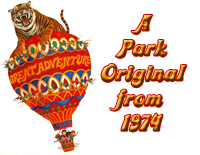
One of the most popular rides in theme parks and amusement parks around
the world is the Wave Swing ride. The most popular style of
this ride is made by Zierer, and its seemingly delicate look makes it
appear to be a much older version, with classic looking paintings and
decorations adorning the ride's fiberglass panels. The model
installed at Great Adventure was a park model version of the ride with
48 seats.
|
| |
|
|
 |
| |
|
|
 |
 |
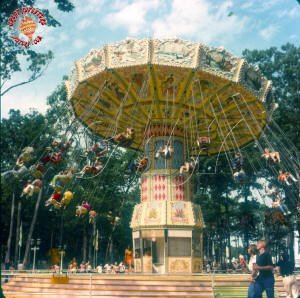 |
|
|
|
|
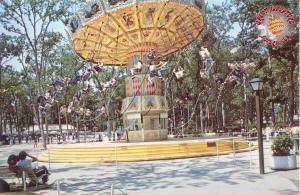 |
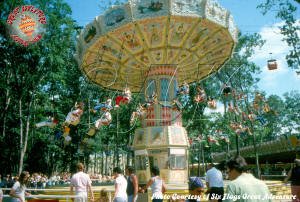 |
 |
| |
|
|
 |
Opening as one of the park's original attractions in 1974, the Flying
Wave was a staple for park visitors. The rides appeal
to families was timeless, and was a great way to cool off on a hot
summer day.
The original design
of the Flying Wave had the operator's booth inside the tower.
The operator stood inside the central plexiglas
enclosure and even went outside the ride operator's booth while the
ride was in motion.
The original yellow metal steps at the base of the ride were removed for
1982, eliminating the short climb for guests up to the swings.
The ride was originally encircled by a simple fence around the ride platform,
and the seats did not originally have
safety belts.
These modifications over the years improved the ride's safety for
both the operators and guests. |
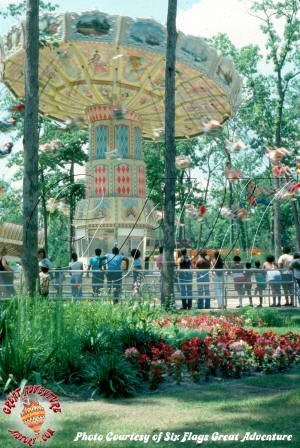 |
|
|
|
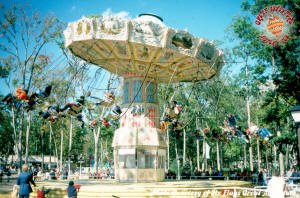 |
 |
| |
|
|
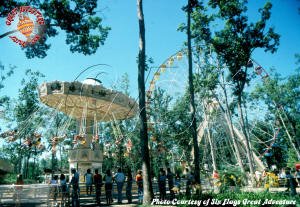 |
 |
 |
| |
|
 |
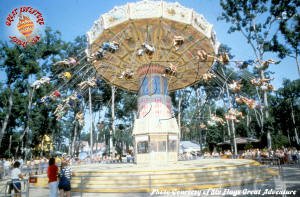 |
| |
|
|
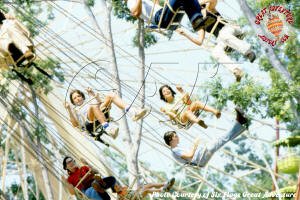 |
 |
 |
| |
|
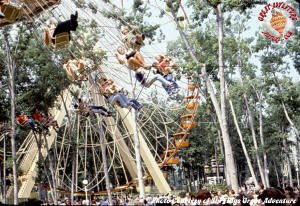 |
 |
| |
|
|
 |
 |
| |
|
|
 |
 |
 |
| |
|
|
 |
 |
 |
| |
|
|
 |
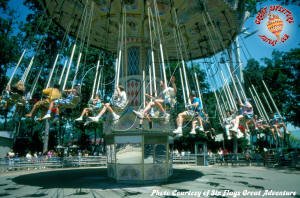 |
 |
| |
|
|
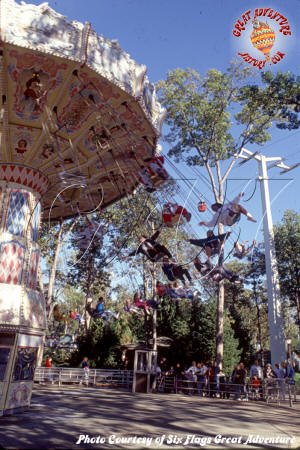 |
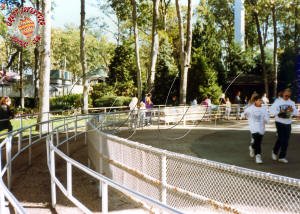 |
 |
| |
|
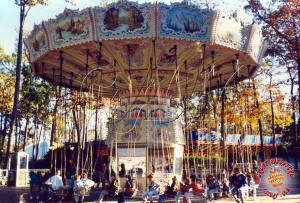 |
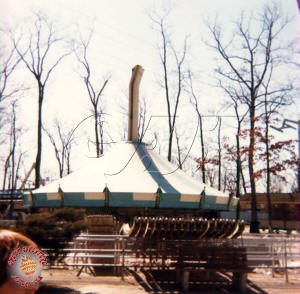 |
| |
|
|
 |
In the early years,
the artwork on the Flying Wave was colorful and vivid. Over the
decades the fiberglass panels weathered and soon appeared drab and
faded.
In 1997, for only one brief season, the ride was sponsored by Bic pens.
Even though the Flying Wave was a Great Adventure original attraction,
it was one of the last rides to receive a decorative sign in 2005. Most people
up until that point had no idea what the ride was called and
simply referred to it as "The Swings".
|
 |
| |
|
|
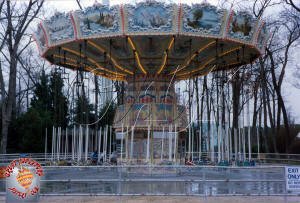 |
 |
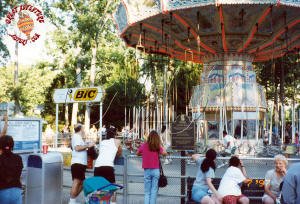 |
| |
|
|
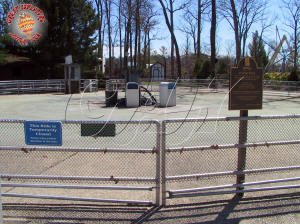 |
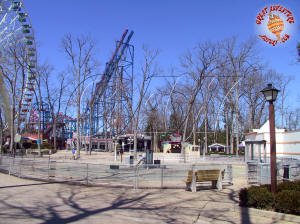 |
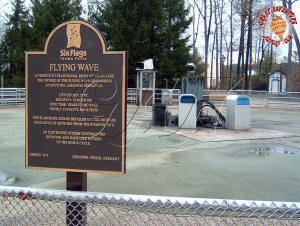 |
| |
|
|
 |
 |
 |
| |
|
|
 |
 |
 |
| |
|
|
 |
 |
 |
| |
|
 |
 |
| |
|
|
 |
 |
 |
| |
|
|
 |
 |
 |
| |
 |
| |
|
|
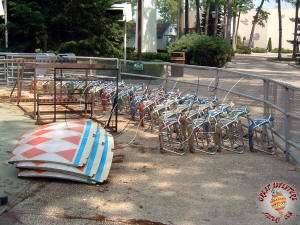 |
In the 2003-2004 off season, the Flying
Wave was disassembled for a total overhaul. By opening day
of the season it had not yet been reassembled.
Over the following weekends of park operations guests could watch as the
pieces of the ride were reassembled from the ground up.
The ride's light tubular steel framework for the canopy was assembled
first around the central hub.
Once the framework was in place, the ride's center column was raised.
The ride's hub traveled up this column, lifted by cables and pulleys. The tilt of the column at the top gave the ride its signature tilt and
the rotation of the column in the opposite direction of the rotation of
the canopy created the waves.
The swings themselves were reattached and the decorative fiberglass
panels and lighting were secured to the frame before the canopy was
hoisted into place.
The ride reopened to the public without its decorative canvas roof in
place, allowing a usually un-seen view of the central column and steel
framework. |
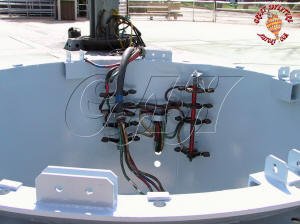 |
| |
|
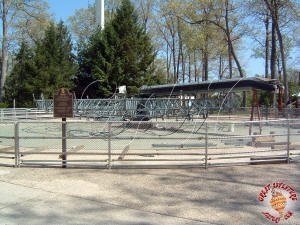 |
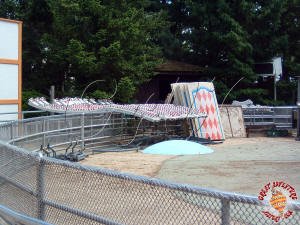 |
| |
|
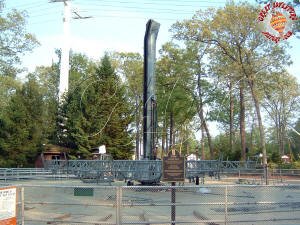 |
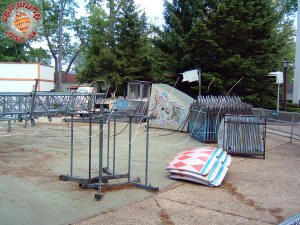 |
| |
|
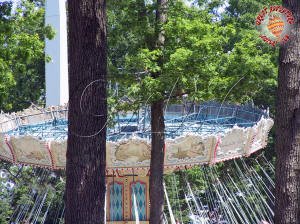 |
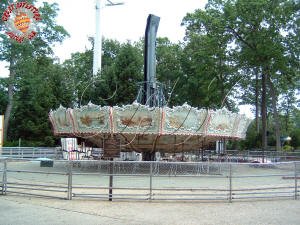 |
| |
|
|
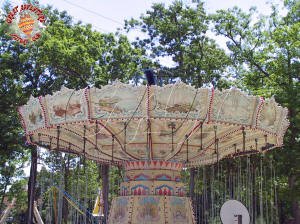 |
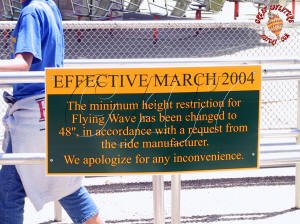 |
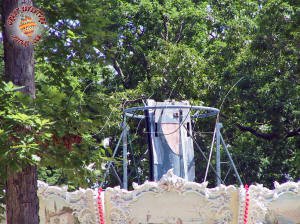 |
| |
|
|
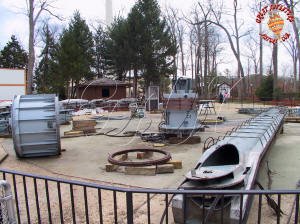 |
The 2005-2006 off season saw yet another
major rehab of Flying Wave, with the ride being rebuilt from the ground
up again. Once again it was not ready to open with the park,
allowing guests a few weeks of watching the reassembly process as all
the parts came together.
A large gear would spin the central column, and a cylinder with copper bands
would ride up the column supplying power for the ride's lighting.
Much of the ride's mechanics were located in the central tower of the
ride. A small gray box coming up from
the ground was where the drive gear met up with the drive shaft which was
under the metal covering in the ground. The ride's drive
motor was in a small building behind the Operator's booth. The drive shaft
was inside a long covered trench that joined the ride and the motor
house.
The fiberglass panels featured molded scrollwork decorations framing the
hand painted flowers and portraits.
The ride was originally designed for portability and easy of assembly on
the European fair circuits. Great Adventure's model was modified for
park use with the relocation of the drive motor from the base platform
to a remote building.
The Flying Wave at night was a spectacular sight with
its hundreds of lights changing from white to red as it spun.
During its final years several minor changes occurred for the Flying
Wave with the replacement of the
light blue canvas roof with a new darker blue version.
In addition, the old aluminum perimeter fence was replaced with a new black wrought iron fence.
Over the years the orange safety belts were added to the seats.
The colorful synthetic wicker was replaced several times as it
wore out and faded. |
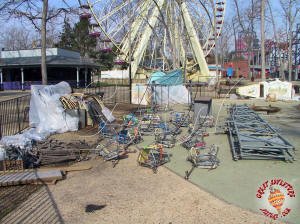 |
| |
|
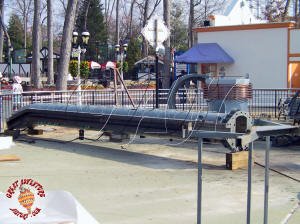 |
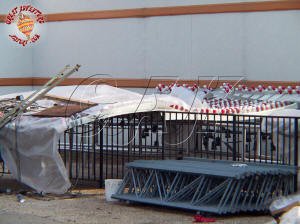 |
| |
|
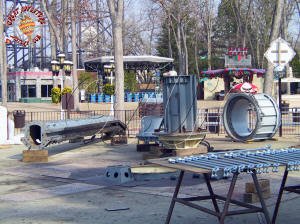 |
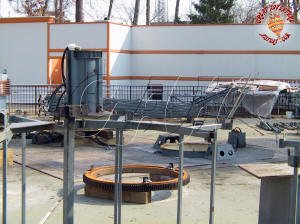 |
|
|
| |
|
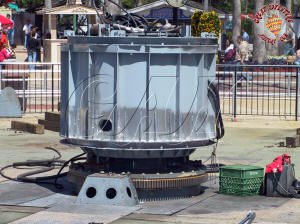 |
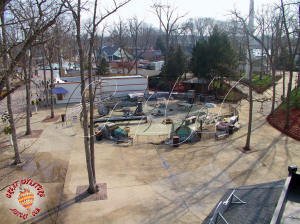 |
| |
|
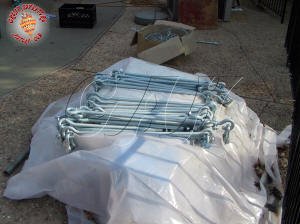 |
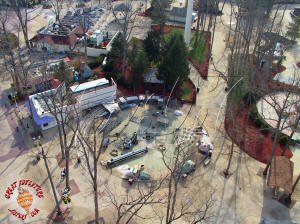 |
|
|
| |
|
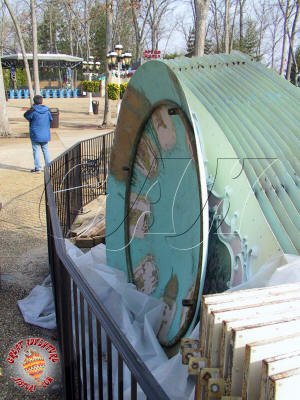 |
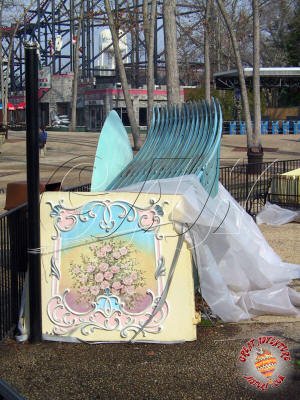 |
|
|
|
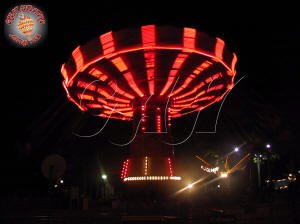 |
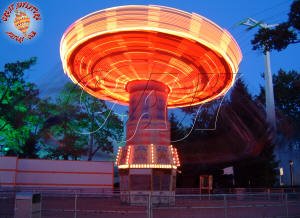 |
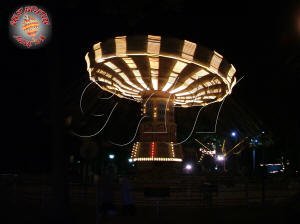 |
| |
|
|
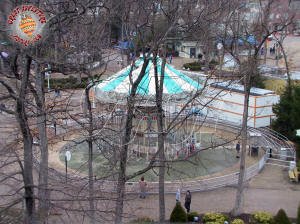 |
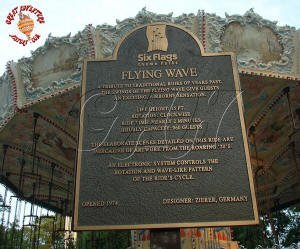 |
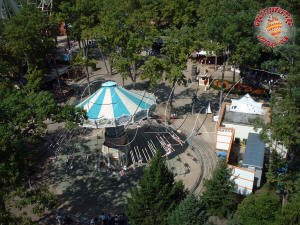 |
| |
|
|
|
Technical Information
|
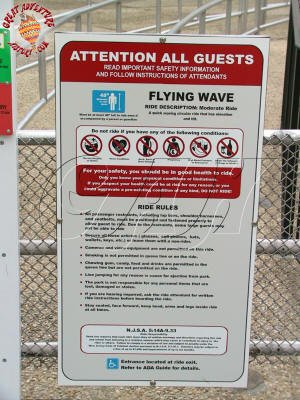 |
|
Manufacturer: |
Zierer, Germany |
|
Model: |
Wave Swinger 48 |
|
Total Height: |
40 feet |
|
Lift Height: |
15 feet |
|
Ground Dimension: |
65 feet diameter |
|
Aerial Dimension: |
69 feet diameter |
|
Number of Seats: |
48 |
|
Ride Cycle Time: |
3 Minutes 30 Seconds |
|
Hourly Capacity: |
816 guests
|
|
|
Even though the intricate paintings of Flying Wave's panels faded with time,
the ride was still as popular as ever delighting the park's guests
of all ages.
After several years of rehab work on the ride, the costs of repairs
became too much and finally during the 2007-2008 off season the ride was
removed from the park. It was not the intention to remove
the ride but it was financially unfeasible to make the necessary
repairs.
The ride's parts were moved to the park's maintenance area where they
sat throughout the 2008 season, and they could be seen stacked along
with other ride parts alongside the lift on Nitro.
After its removal, the Flying Wave's ride site was
occupied with the Turbo Bungy upcharge trampoline attraction - a far cry
from the once glorious Flying Wave swing ride. |
|
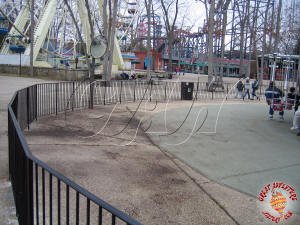 |
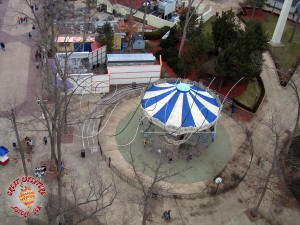 |
| |
|
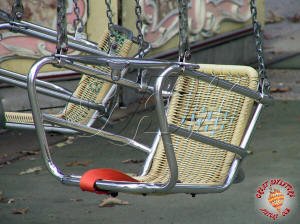 |
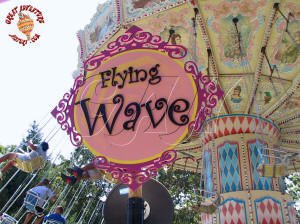 |
| |
|
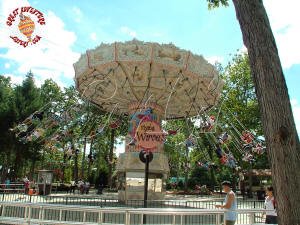 |
 |
| |
|
|
 |
 |
 |
| |
|
|
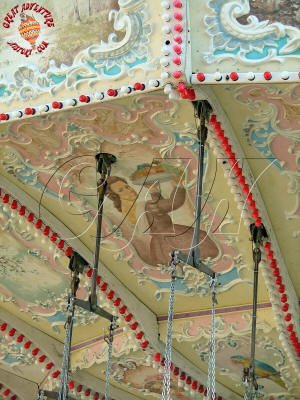 |
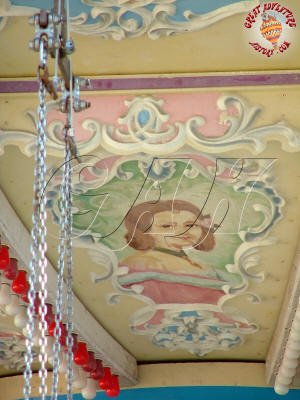 |
 |
| |
|
|
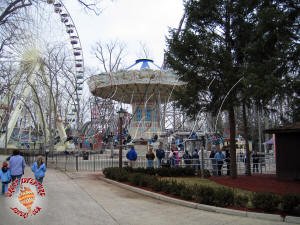 |
Watch a video of the
Flying Wave
in action:
 |
| |
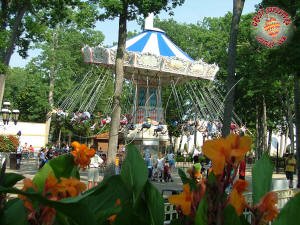 |
| |
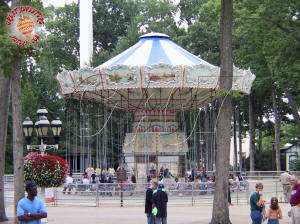 |
| |
Details of some of the intricate scroll
designs molded into the panels as well as the elaborate
hand painted pastoral scenes, portraits, and animals featured on the
Flying Wave can be found below: |
| |
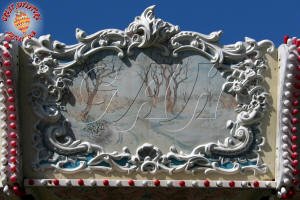 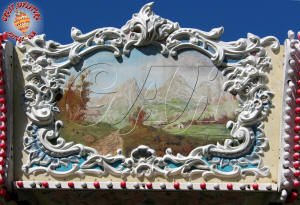 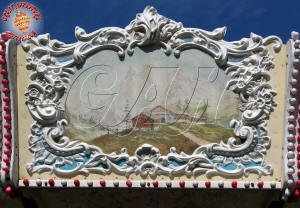 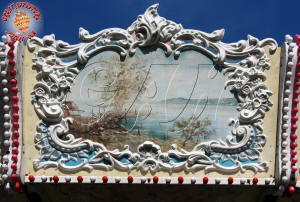 |
 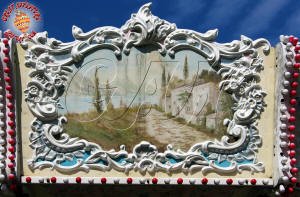 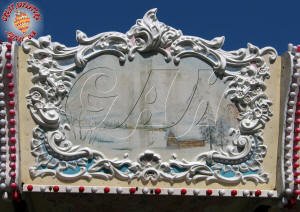 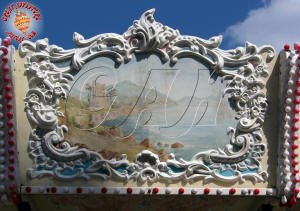 |
 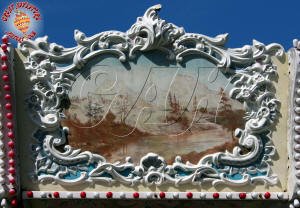 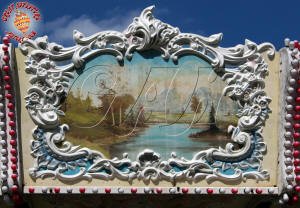 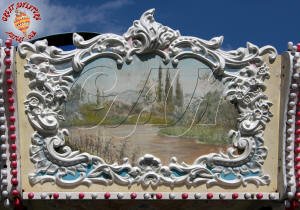 |
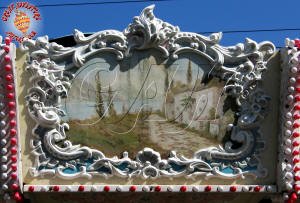 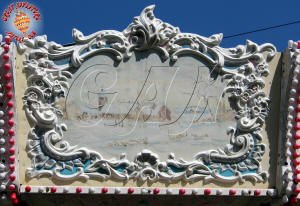 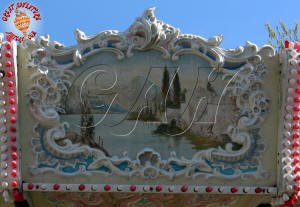 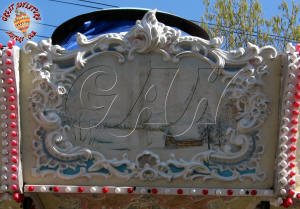 |
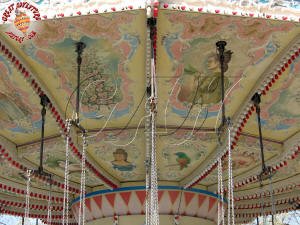 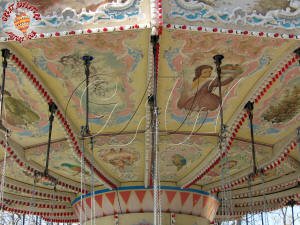 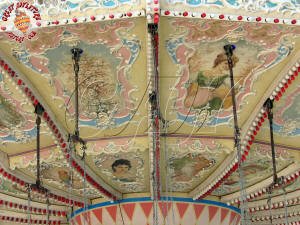 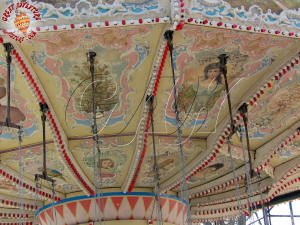 |
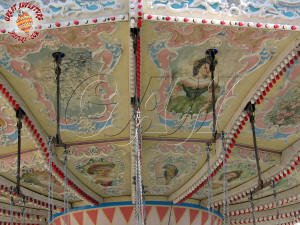 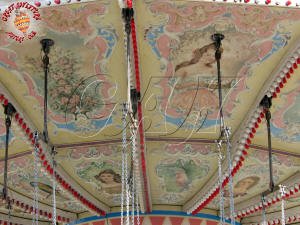 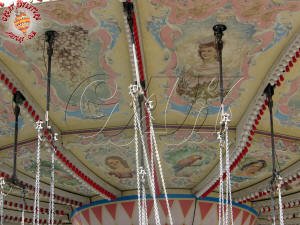 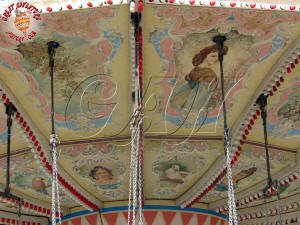 |
|
|
|
|

